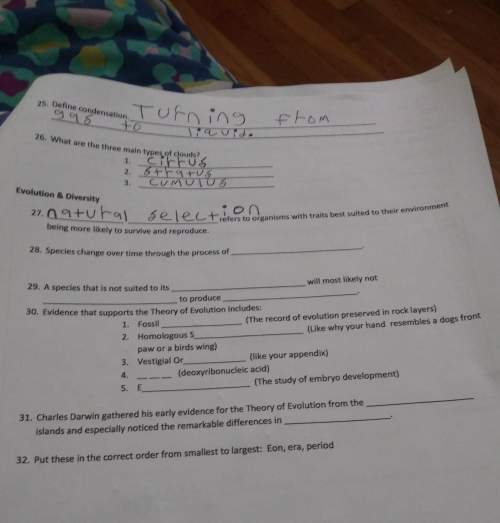
A 25.0-mL aliquot of an aqueous quinine solution was diluted to 50.0 mL and found to have an absorbance of 0.656 at 348 nm when measured in a 2.50-cm cell. A second 25.0-mL aliquot was mixed with 10.00 mL of a solution containing 25.7 ppm of quinine; after dilution to 50.0 mL, this solution had an absorbance of 0.976 (2.50-cm cell). Calculate the concentration of quinine in parts per million in the sample.

Answers: 3


Other questions on the subject: Physics

Physics, 22.06.2019 00:30, sophiaa23
Next a skier is pulled by a tow rope up a frictionless ski slope that makes an angle of 15 with the horizontal. the rope moves parallel to the slope with a constant speed of 0.69 m/s. the force of the rope does 800 3 of work on the skier as the skier moves a distance of 8.4 m up the incline. (a) if the rope moved with a constant speed of 2.2 m/s how much work would the force of the rope do on the skier as the skler moved a distance of 8.4 m up the incline? at what rate is the force of the rope doing work on the skier when the rope moves with a speed of (b) 0.69 m/s and (c) 2.2 m/s?
Answers: 1

Physics, 22.06.2019 03:00, mmcdaniels46867
Isla’s change in velocity is 30 m/s, and hazel has the same change in velocity. which best explains why they would have different accelerations? isla had negative acceleration, and hazel had positive. isla had a different time than hazel. isla had positive acceleration, and hazel had negative. isla went a farther distance than hazel.
Answers: 1

Physics, 22.06.2019 12:40, live4dramaoy0yf9
Find the equation for the plane through upper p 0 left parenthesis negative 4 comma negative 8 comma negative 5 right parenthesis perpendicular to the following line. xequalsnegative 4 minus t, yequalsnegative 8 plus 2 t, zequals3 t, minusinfinityless thantless thaninfinity
Answers: 2

Physics, 22.06.2019 13:30, kuddlebugsmommy
The two stars in a certain binary star system move in circular orbits. the first star, alpha, has an orbital speed of 36 km/s. the second star, beta, has an orbital speed of 12 km/s. the orbital period is 137 d. a) what is the mass of the star alpha? b) what is the mass of the star beta?
Answers: 1
You know the right answer?
A 25.0-mL aliquot of an aqueous quinine solution was diluted to 50.0 mL and found to have an absorba...
Questions in other subjects:

Biology, 29.01.2021 22:20

History, 29.01.2021 22:20


Mathematics, 29.01.2021 22:20

Mathematics, 29.01.2021 22:20


Mathematics, 29.01.2021 22:20


Mathematics, 29.01.2021 22:20

















